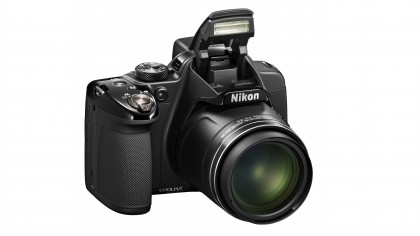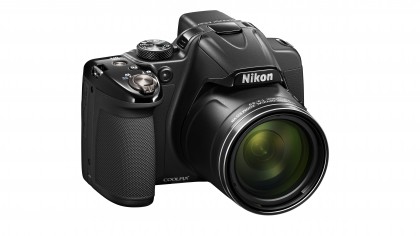Why you can trust TechRadar
Colours are generally represented well by the P530, but on occasion, skies tend to have a cyan cast, which although not hugely uncommon for compact cameras, is a little disappointing to see here.
Despite the step back in resolution (16 million pixels compared with 18 million from the P520), the P530 is capable of resolving detail well. If you zoom in 100%, there is evidence of some image smoothing, even at lower sensitivities, but it's not something that should be worrying unless you're printing at very large sizes.

Noise is generally controlled pretty well at lower sensitivities, although that does result in some loss of detail. As is to be expected, as you step into higher sensitivity settings, noise starts to become more problematic, but it's only after ISO 3200 that images start to become unacceptable.
The zoom performance of this camera is probably the most crucial since that's its key selling point. At the furthest reach of the 42x zoom optic, there is a noticeable loss in detail when examining at 100%, but when viewing at normal printing or web sizes, it's more than acceptable and is a great flexible option for travelling photographers.
There is also a digital zoom available if the optical zoom isn't enough – while it's nice to have this, image quality suffers quite badly, and is only recommended for use if you're desperate, and/or you only want to print or share the images at small sizes.
Generally, autofocusing speeds are adequate. The lens locks onto the target reasonably quickly when shooting in good or bright light, hunting around a little more when in darker conditions. You can activate macro focusing if you want to get particularly close to a subject, and generally this also produces attractive images that fill the frame and are sharp.

For the majority of shots, the P530's matrix (all-purpose) metering system does a good job of helping the camera to produce accurately exposed images. It can struggle when you're shooting something with high contrast though, such as a backlit building – an instance when switching to spot metering can be beneficial.
Under different kinds of lighting sources, the P530 copes reasonably well to produce accurate colours. Under artificial lighting, it errs towards warm tones, but it's not unexpected for a camera of its type, and it's easy enough to switch to a more appropriate white balance setting if you need to.
There are a number of different creative filters that you can shoot with, which is good if you like to experiment with your photos. It will of course come down to personal preference, but it's worth using all of them at least once to see if you like them. It's not the greatest set available on the market, but it's nice to see them here nonetheless. You can see examples of the filters on the sample images page.
Verdict
The bridge camera sector is one of the most competitive areas of the camera market, with several manufacturers now producing cameras with huge zoom ranges.
Here we have a camera that offers a 42x optical zoom in a budget body – so if your main concern is the zoom range, then this is a good option for you.

While it's a shame that it can't shoot in raw format, the fact that it has full manual control should appeal to enthusiasts who want a no-frills camera, or perhaps for those looking for a decent travel camera.
Handling is good for the most part, and image quality is decent. It's no better than its predecessor though, which you can still pick up for a reasonable price.
We liked
The huge zoom range makes this ideal for those looking for a flexible camera to shoot a wide range of subjects. Image quality at the telephoto end of the zoom isn't perfect if you examine at 100%, but it seems unlikely that the majority of the users of this camera would do that.
We disliked
There's no discernible leap in image quality from the camera's predecessor, the P520, making this seem like a little bit of a pointless upgrade.
Final verdict
Nikon has once again produced a solid bridge camera in the P530, and if you're on a budget and looking for something that gets the job done without worrying too much about tempting extras, then this is a good option.
For now, you can still buy the P520, which if you're bothered about an articulating screen makes for a better purchase. If you have a bit more cash to spend, take a look at the P600 too.
Current page: Performance and verdict
Prev Page Introduction and build and handling Next Page Sample imagesAmy has been writing about cameras, photography and associated tech since 2009. Amy was once part of the photography testing team for Future Publishing working across TechRadar, Digital Camera, PhotoPlus, N Photo and Photography Week. For her photography, she has won awards and has been exhibited. She often partakes in unusual projects - including one intense year where she used a different camera every single day. Amy is currently the Features Editor at Amateur Photographer magazine, and in her increasingly little spare time works across a number of high-profile publications including Wired, Stuff, Digital Camera World, Expert Reviews, and just a little off-tangent, PetsRadar.

